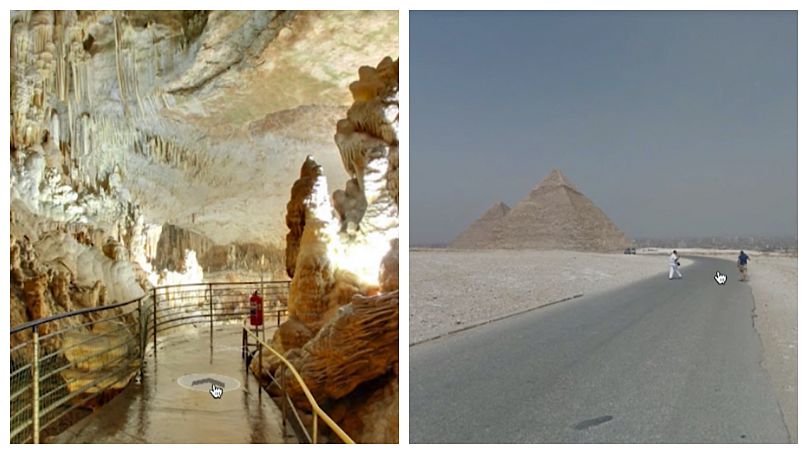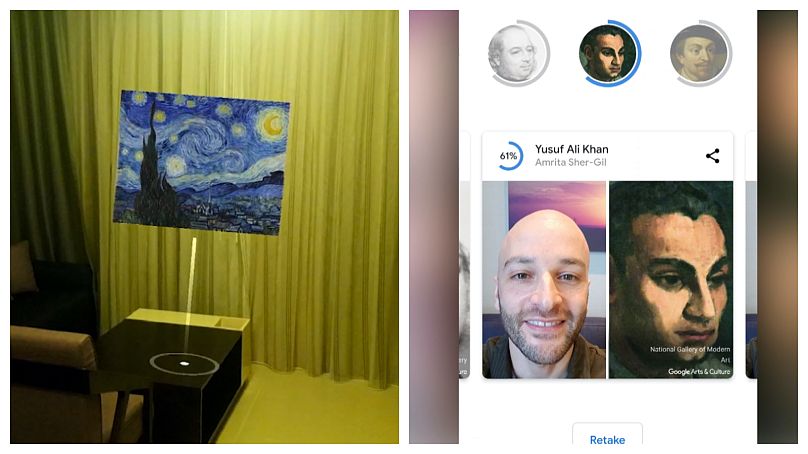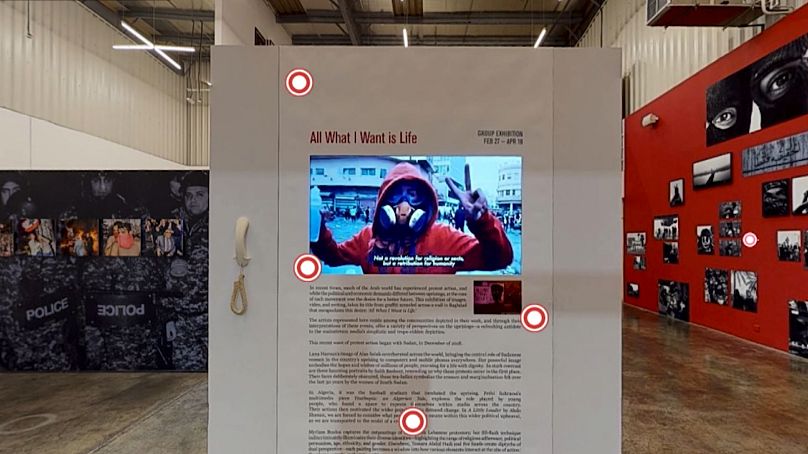Virtual reality websites are becoming a ticket to cultural experiences for many who are currently self-isolating.
Virtual reality websites are becoming a ticket to cultural experiences for many who are currently self-isolating.
Platforms such as Google Arts and Culture, are permitting homebodies to electronically travel to around 2,000 cultural institutions in about 80 countries.
These include Spain’s, currently closed, Guggenheim Museum. Online visitors can enter the monument of modernism free of charge and look upon famous works including Jeff Koon’s multicoloured, stainless-steel, bouquet called, ‘Tulips’.
As for cultural sites in the Middle East and North Africa, the ancient Egyptian pyramids and Lebanon’s Jeita Grotto - home to some of the world’s largest stalactites - are proving popular digital destinations, according to the technology giant.
“More people have been visiting the Google Arts and Culture website,” says Luisella Mazza, the operations director of the Google Cultural Institute.
“And we are happy to see that more and more people find the diverse content that we make available through the arts and culture website, and through our free hub, worthwhile in these challenging times.”
Downloading culture
To keep things interactive, Google is using modern technology to create and upload digital replicas of famous artworks for users, on their application.
Through augmented reality, art fans can transport famous works, such as Vincent Van Gogh’s ‘The Starry Night’, from the walls of the Museum of Modern Art in New York into their own living rooms.
People can also use the ‘Art Selfie’ function to find their portrait look alike, by having their face scanned and compared to thousands of artworks displayed in museums across the globe.
Entering the art matrix
Other art institutions, and art forms, around the world are making use of online offerings.
In the UAE, for example, New York University Abu Dhabi staged a virtual poetry event called ‘Rooftop Rhythms’, which saw word spinners stream their lyrical art in an open-mic night.
In Dubai, the gallery-packed cultural district of Alserkal Avenue, which in its peak season of March, saw around 40,000 visitors last year, went into lockdown in 2020.
Before it did so, and in just a few days, the community digitized more than a thousand artworks to virtual galleries.
Helping to make this a virtual reality was Tanzanian photographer Mohamed Somji, who has been a member of the Alserkal Avenue community since 2011.
He says that online galleries are creating unique, educational, experiences for art lovers.
“I think the added advantage to having a multimedia experience, is the ability to add on tags to these artworks - where you can get additional information,” says Somji, who is a gallery owner and director of Gulf Photo Plus.
Artful interfacing
For those who step inside Alserkal Avenue’s 360-degree galleries, they can hear directly from the artists themselves, measure artworks for size and even purchase the pieces they want to display at home.
“It’s never going to replicate the experience of being there physically. Where you can actually see and experience for yourself, with your own eyes, the artwork” says Somji. “[Yet] it comes pretty close.”
Nearly eight thousand virtual visitors entered their Alserkal Avenue’s portal, since its digital premiere in March.
Although relatively few purchases have been made since then, familiarity with digital art spaces is growing say some gallerists, perhaps implying that sofa surfing for art could become an avant-garde movement.
SEEN ON SOCIAL MEDIA: REFLECTIONS
UAE resident Loris from Lebanon worked on an art collection titled, Min Hayati, or From My Life.
With contributions from Nancy Sarkis, Ana De Oliva and Nicolas Tabbal.














